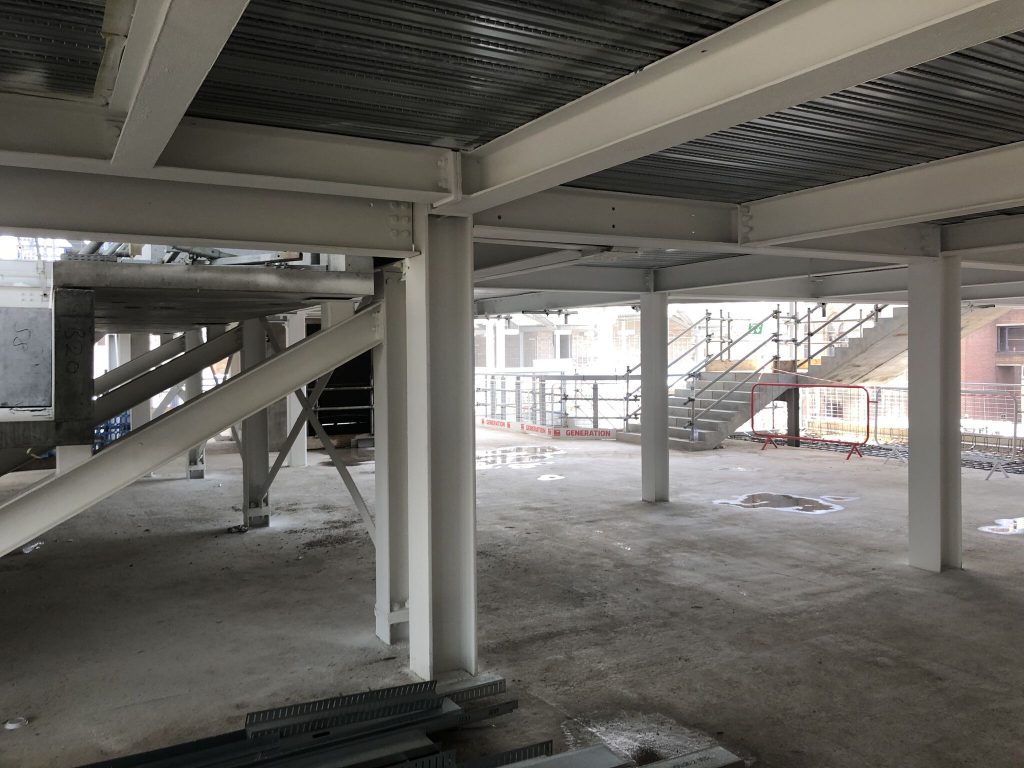Passive fire protection – sometimes referred to simply as PFP – is where the building itself is used to help slow the spread of fire. This, in turn, allows people inside the building more time to evacuate safely and can even provide time for fire and rescue services to arrive, saving lives and potentially limiting the damage a fire can cause.
What is Passive Fire Protection?
Without passive fire protection measures, fires that start in one area of a building can quickly travel through a structure and raze it to the ground. With this in mind, this month at TVF (UK) Limited, we’re going to run through different elements of fire safety that contribute towards passive fire protection.
If you need our passive fire protection services, for your new build, or existing building, call our team on [ld_default] to discuss your requirements.
Fire Risk Assessments
While a fire risk assessment doesn’t actually implement any passive fire protection, it’s an important part of keeping on top of a range of important fire safety matters for your building.
In identifying hazards and risks, as well as documenting any remedial action required for your building, a fire risk assessment can highlight where there are opportunities to control or reduce a fire. This is where passive fire protection methods could be recommended.

Structural Fire Surveys
The structure of your building plays a huge part in how well passive fire protection works. This is something to be considered at the design phase of a building, covering aspects such as the materials being used in construction, along with how the layout can help to slow a fire down and limit spread between areas (known as compartmentation).
Fire Stopping Surveys
Fire and smoke can easily spread through the smallest of gaps, which means compartmentation can be compromised if there are holes and voids. These are often caused by work carried out by contractors, so a fire stopping survey is an effective way of checking for such breaches.
Fire Barriers
Fire barriers are fire-rated materials such as boards, batts and even fire curtains that can be used for walls, floors and ceilings to seal gaps and maintain the integrity of compartmentation in a building. Collars can also be applied to cables, ductwork and pipes that run through structures to ensure they can stand up to sagging and vibration, preventing any cracks and gaps from being created.
Intumescent Paint
When exposed to the high temperatures of a fire, even steel can be warped or bent. This poses a danger to the integral structure of your building before help can arrive, which is why there is a range of coatings available to protect your structural steel. These include intumescent paint coating, as previously mentioned, along with cementitious/fibrous coatings and fire encasement boarding.
Structural Steel Fire Protection
When exposed to the high temperatures of a fire, even steel can be warped or bent. This poses a danger to the integral structure of your building before help can arrive, which is why there is a range of coatings available to protect your structural steel. These include intumescent paint coating, as previously mentioned, along with cementitious/fibrous coatings and fire encasement boarding.
As you can see, while there are lots of things you can actively do to prevent fire, there are also plenty of passive measures you can implement to give those in your building protection and time to evacuate.
A quick note on the different materials in passive fire protection:
Fire-rated materials are designed to give required resistance times between 30 and 120 minutes. This can help you meet the legal stipulations set out for your building. If you’re unsure what you require for your building, we always recommend consulting an expert fire stopping company.
Here at TVF (UK) Limited, we can provide all your passive fire protection needs across High Wycombe, Watford and Slough.
If you’re based outside these areas, the team of passive fire specialists at our sister company, Fire Industry Specialists Ltd, can help across Lincoln, Nottingham, Sheffield, Manchester, Birmingham and throughout the UK.
Call us today on [ld_default] to discuss your passive fire protection measures and we’ll be happy to help.













